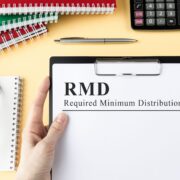Financial advisers know the ins and outs of selecting retirement savings plans for clients who are self-employed.
Two of the finest choices for the self-employed are the SEP-IRA and the Solo 401( k). Both options offer current tax deductions and the ability to grow retirement cost savings on a tax-deferred basis until retirement.
SEP means Simplified Staff member Pension. A SEP-IRA is a type of Individual Retirement Account with greater contribution limits. All contributions are made by the employer, no staff member income deferrals are permitted.
The maximum contribution is the lesser of 25% of compensation or $57,000 for 2020. This includes wage or self-employment income if the saver is an Arrange C taxpayer. In truth, Arrange C taxpayers may be restricted to 20% of net earnings due to the method the computation works.
With SEP-IRA employees of the business are eligible, though this can get costly as a business owner should offer each worker the very same percentage contribution as she or he offers to themselves. These plans typically work best for those who are self-employed without any staff members or perhaps a business partner or a member of the family who is part of the business.
A SEP-IRA can be started up to the date your client files their tax return, consisting of extensions, for the prior year. For instance, a customer who is a Setup C taxpayer can open and money their SEP-IRA up till Oct. 15 of 2020 and still include the contribution as part of their 2019 return if they submit an extension for the year.
Account-holders can not take a loan from their SEP-IRA and there is not a Roth version of the SEP-IRA that is offered.
Solo 401( k)
Involvement in a solo 401( k) is restricted to the business owner, a partner who is active in business, and any service partners. Like a 401( k) for a company, individuals can contribute from their wage or self-employment earnings approximately the limitations for a 401( k) plan in result for that year.
Furthermore, the employer can make earnings sharing contributions of up to 25% of the settlement, for 2020 this combined limit is $57,000 or $63,500 for those who are 50 or over. These contributions are deductible overhead.
Unlike a SEP-IRA, a Roth solo 401( k) can be opened. Loans can be taken from a Solo 401( k) if allowed by the plan utilized by the customer’s custodian.
To contribute for the current year, the account should be open by Dec. 31 of that year. Contributions for the previous tax year can be comprised until the customer files their income tax return, consisting of extensions.

Which Is Better for Your Client?
Both of these strategies have prospective benefits for your customers, the best strategy for your client will rely on their circumstances. Here are some things to think about in making your recommendation to your client:
Are their earnings variable from year-to-year? If so the solo 401( k) may be the better option due to the fact that the worker deferral element that enables them to contribute the optimum quantity in location for a 401( k) for that year as long as they make enough to do so. For 2020 this suggests that a self-employed client who is under 50 can contribute as much as $19,500 as long as they earn a minimum of that much. A client utilizing a SEP and earning $20,000 would be restricted to a $5,000 contribution to their account.
Does your client have employees? If yes, then the solo 401( k) can not be used as the rules restrict involvement by staff members aside from the business owner, a partner participating in the plan, and any organization partners leaving the SEP-IRA is the better option. If there are a significant number of workers, your customer may consider a different option besides the SEP-IRA as it can be a pricey choice for the service owner with a high variety of employees.
Does your client need to start and money a plan soon before their tax filing due date? If so then the SEP-IRA is an excellent choice. A SEP-IRA can be started and funded right up till the customer’s tax filing due date for the previous tax year, including extensions.
Does your customer want the choice of money in a Roth account? If so then the solo 401( k) is the better choice as there is no Roth alternative allowed the SEP-IRA.
Does your customer desire the alternative to take a loan from their retirement strategy? The solo 401( k) would be the much better alternative in this case as SEP-IRAs do not allow for strategy loans.
Is your client is 50 or older and do they desire to be able to optimize their contributions? The solo 401( k) is the much better alternative. SEP-IRAs do not enable an additional amount for catch-up contributions, solo 401( k) s do. For 2020 the optimum contribution for a SEP-IRA is $57,000 despite their age. For those who are 50 or over in 2020 the optimum combined worker and employer contribution maxes out at $63,500 those 50 or over.























Comments